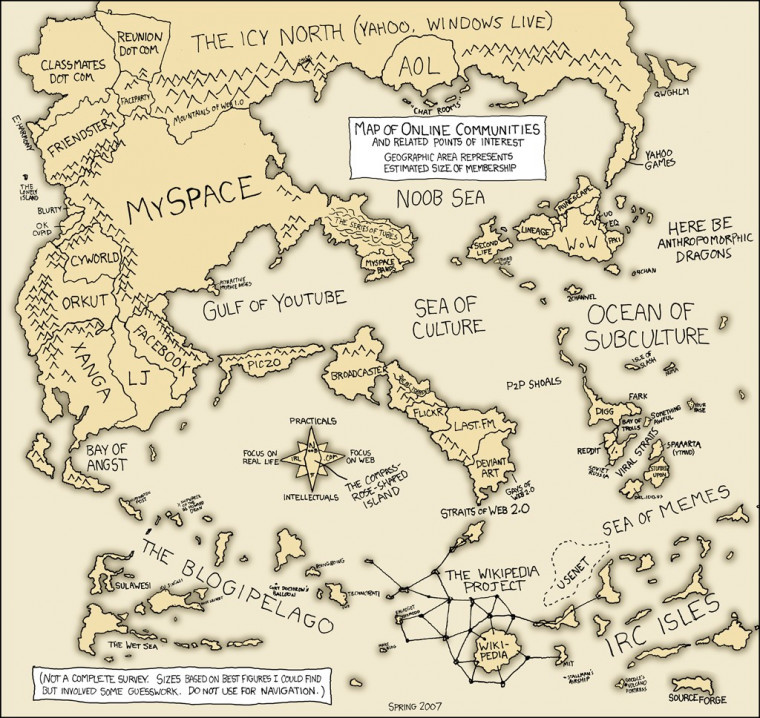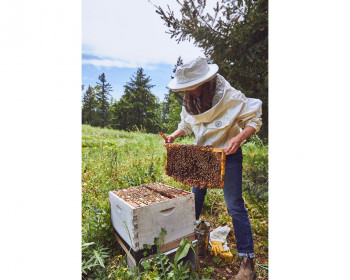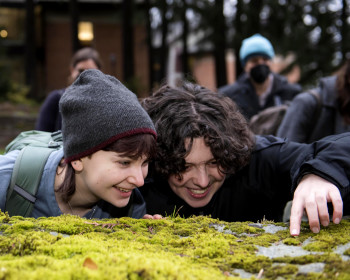Stand on the Shoulders of Giants: Building a Web 2.0 Community
Open gallery

August 18, 2009
This summer, Lewis & Clark set out to implement a long-overdue redesign of its website. With the redesign came new opportunities to expand the ENVS program’s online presence toward a more interactive, web-based approach. Our goal, to put it simply, was to create a process by which students can build off of those who have come before them, and interact with each other in ways that allow us, the students, to collaborate and produce better scholarship. This shift towards collaborative learning mirrors trends that have been sweeping the online world for years. Facebook, Twitter, and other types of social networking are far ahead of the scholarly sphere in creating communities where information is shared, debated, and users engage with each other. This is called Web 2.0, a departure from the one-sided, informational website.
The biggest, most obvious change is that there will be no more ENVS emails from our administrative coordinator Pete about poster celebrations and pizza meetings. They will still take place, of course, but now we will find out about them via MyLC, an RSS reader that is our new go-to source of information. Above and beyond some required ENVS feeds, students get to pick and choose those that appear in their MyLC, which can include anything from new ENVS internships to the latest New York Times headlines.
Students at LC should not have to reinvent the wheel with every new research project. Engaging with existing resources and building off of them is what Web 2.0 is all about. We recreated and expanded sample research themes for all of our ten local and overseas research sites. They are now ready for students and instructors to use as a jumping off point for situated research. Research site pages are now conveniently located in the Resources section of the new website. This section is our toolkit for ENVS projects, with support from the newly redesigned Help Wiki collection for when we get stuck.
Another key feature of our community-building effort is the segregation of Delicious —a Web 2.0 site where we share online research resources—into three “Delicii,” as we call them. There is a general, free-for-all database called lcenvs where you can add any interesting, environmentally related content such as Grist articles or news stories that you want to share with other ENVS students. As always, Delicious resources can be commented on by anyone in lcenvs. The two other ”Delicii” are lcenvsres and lcenvsgis, which separates research site-related resources (all newly tagged and organized for easy searchability) and GIS metadata used for mapping and spatial analysis.
Finally, the updated scholarship database provides us with tons of ideas and past examples of ENVS student work to inspire our concentration or research project. Together we hope these new and more easily accessible resources via the beautifully designed new website provides a better way of doing environmental studies that doesn’t require you to reinvent the wheel.
Sarah Bobertz and Dick Fink,
ENVS Research Assistants
More Environmental Studies Stories
Environmental Studies is located in room 343A of John R. Howard Hall on the Undergraduate Campus.
MSC: 62
email envs@lclark.edu
voice 503-768-7790
fax 503-768-7620
Symposium Advisor Jessica Kleiss
Environmental Studies
Lewis & Clark
615 S. Palatine Hill Road MSC 62
Portland OR 97219


